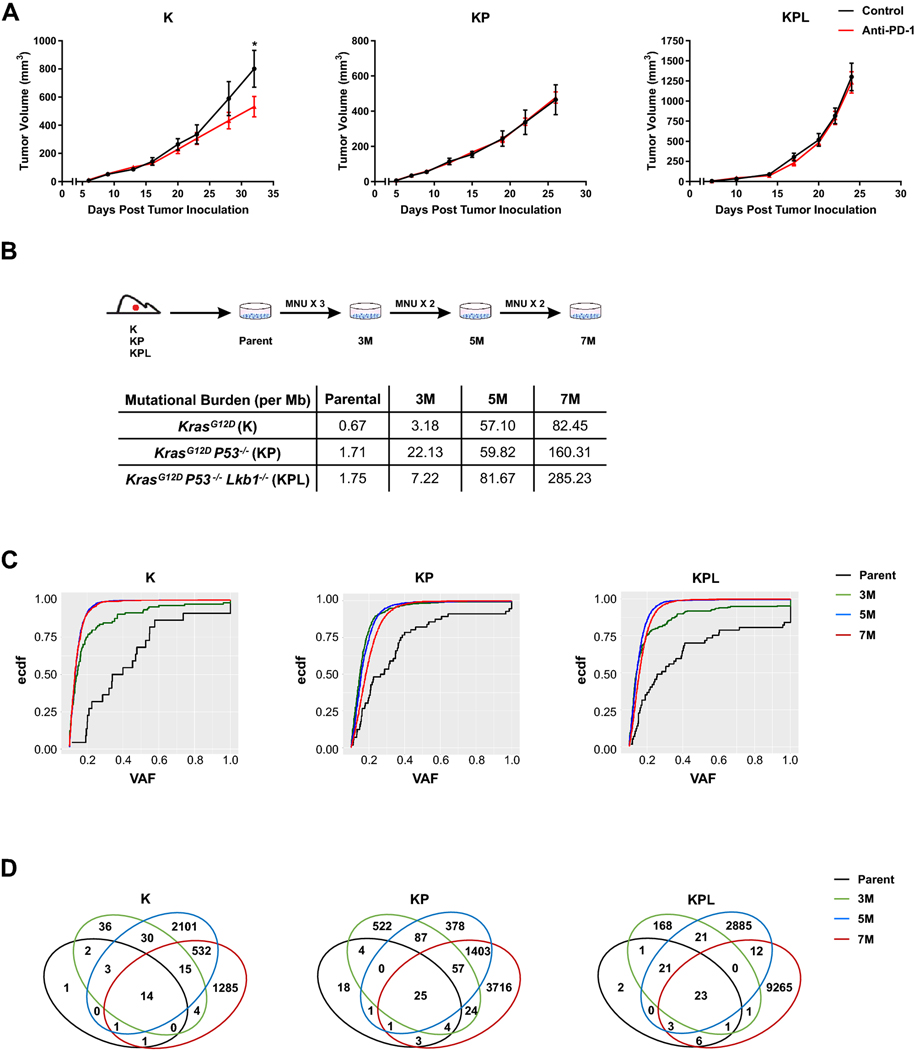Fig. 1.
Murine models of NSCLC with varying mutational burden. a After subcutaneous (SC) tumor inoculation [K (2 × 106) cells in 129-E mice; KP (8 × 105) cells in FVB mice; KPL (1 × 105) cells in FVB mice], mice bearing < 50mm3 tumors (∼ day 7) were treated with (i) isotype control, (ii) anti-PD-1 (200 μg/dose 3 times weekly for 4 doses), and tumor growth was measured with caliper. Results are representatives of at least two biological replicates of 6–10 mice per group. b K, KP, and KPL were exposed to 100 μg/mL of MNU for 45 min. Cells were passaged prior to additional exposures to MNU for a total of 3, 5, and 7 exposures (3M, 5M, 7M). TMBs revealed by WES analyses are shown in the table. c Empirical cumulative distribution function (ECDF) of the mutations is plotted against VAF as an illustration of tumor heterogeneity within each family of cells. d Venn diagram of shared and private mutations of the K, KP, and KPL isogenic cell lines. P values were determined by two-way ANOVA with Tukey post-test. *P < 0.05

